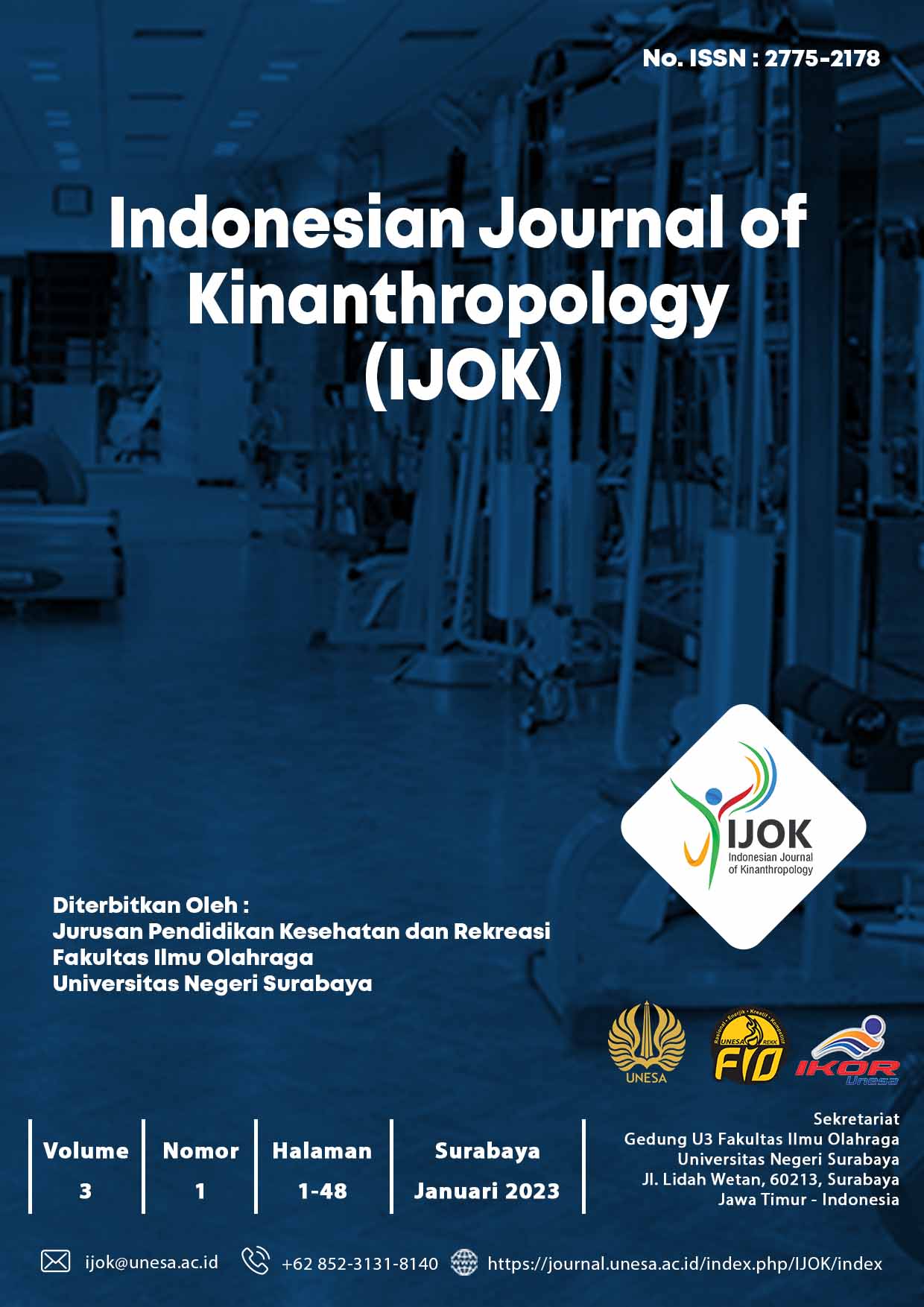Abstract
Background: Natural abilities are all the medicinal displays and medicinal assets defined in an area. Natural abilities can be processed and can be developed. The optimal development and utilization of the potential for Rafting Sports on the Kaliboyo River, Tulis District, Batang Regency, can increase economic growth and the welfare of the surrounding community. This study aims to determine the potential for the development of rafting on the Kaliboyo River, Tulis District, Batang Regency.
Methods: This study uses a qualitative approach with data collection techniques of observation, interviews and documentation. As a step to obtain data, a number of parties were involved including the Batang Regency Youth and Sports Tourism Office (DISPARPORA), the local village head (Manager), as well as elements of the community or rafting actors in Batang district.
Results: The results showed that the potential for the development of rafting sports on the Kaliboyo River, Tulis District, Batang Regency is classified as a promising potential to be developed into spot tourism, so that it can increase and increase human resources and economic growth, especially for the people in the Kaliboyo river environment, Tulis District, Batang Regency.
Conclusions: There are two locations in Batang Regency that have potential and have been developed as rafting tours where these locations can be developed more broadly into an integrated tourist attraction. These locations include Kaliboyo River, Pandansari Rafting Village.
References
Badan Pusat Statistik (BPS). 2013. Proyeksi Penduduk Indonesia 2010-2035. Jakarta: Badan Pusat Statistik.
Bintang, Dwi NR dan Agustin, 2010. Teknik Pengarungan dan Permainan Dengan Media Arung Jeram. Jakarta: Pakis Adventure.
Fretes, R. A. De, Purnomo, B., Soenoko, R., & Astuti, M. (2013). Strategi Perencanaan Dan Pengembangan Industri Pariwisata Dengan Menggunakan Metode Swot Dan Qspm ( St
Hudah, Maftukin. 2017. Sport Tourism Sebagai Strategi Dan Tantangan Perkembangan Social Olahraga Dalam Kehidupan Masyarakat. Seminar Nasional Keindonesiaan Ii. 685-706.
Hasanah, M. (2017). Karakteristik Jalur Arung Jeram Di Way Sekampung Provinsi Lampung Tahun 2016.
Kamus Besar Bahasa Indonesia, (nd) Arti Kata Potensi. Online https://kbbi.web.id/potensi. (diakses 10/2/19)
Kamus Besar Bahasa Indonesia, (nd) Arti Kata Pengembangan. Online https://kbbi.web.id/kembang. (diakses 10/2/19)
Kamus Besar Bahasa Indonesia, (nd) Arti Kata Arung. Online https://kbbi.web.id/arung.mengarung. (diakses 11/0219)
Komaini, Anton, Gemaini, Andri , & Syaputra, Andi. 2018. Pelaksanaan Olahraga Arung Jeram Di Sungai Batang Sangir Kabupaten Solok Selatan. Universitas Negeri Padang. Jurnal Gelanggang Olahraga 2(1).
Moleong, L.J. 2011. Metodologi Penelitian Kualitatif. Edisi Revisi. Bandung: PT. Remaja Rosdakarya.
Ningsih, Ratna Frehatin. 2017. Perancangan Media Promosi Arung Jeram Di Mendut Rafting. Universitas Negeri Yogyakarta.
Sugiyono. (2010). Metode Penelitian Kuantitatif, Kualitatif dan R&D. Bandung: Alfabeta.
Sugiyono. (2010). Metode Penelitian Kuantitatif, Kualitatif dan R&D. Bandung: Alfabeta.
Website Resmi Pemerintah Kabupaten Batang. Online https://www.batangkab.go.id/?p=2&id=2 (diakses 11/2/19)
Winaningsih, Nariyah, H., & Rifai Yusuf. (2018). Perencanaan Pengembangan Desa Wisata Cibuntu Oleh Dinas Pemuda Olahraga Dan Pariwisata Kabupaten Kuningan Dalam Meningkatkan Kunjungan Wisata (Studi Kasus Bidang Destinasi Pariwisata), 6.

This work is licensed under a Creative Commons Attribution-ShareAlike 4.0 International License.
Copyright (c) 2023 Indonesian Journal of Kinanthropology (IJOK)
